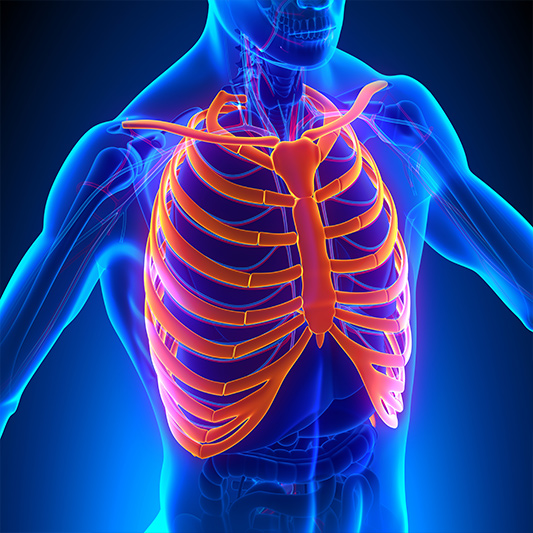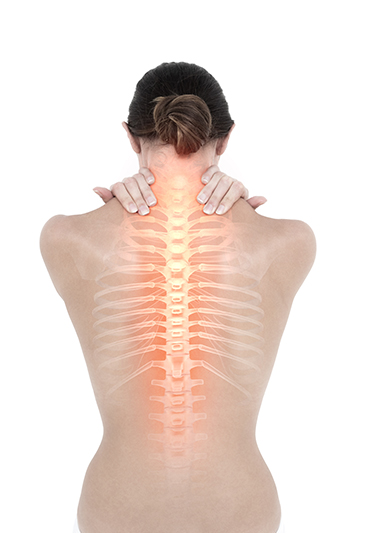Thoracic Pain in Beverly Hills
Thoracic pain refers to discomfort in the upper and middle part of the back or chest. It can involve the thoracic spine, ribs, or the associated muscles and nerves. However, thoracic pain may also be a sign of a problem with an organ such as the heart or lungs, which would require proper evaluation.

Symptoms of thoracic pain may include:
- Upper/mid back pain
- Chest pain
- Feelings of restriction when taking a deep breath
- Pain/Stiffness when twisting the upper trunk
- Pain or pressure on or around the ribs
Causes of Thoracic Pain
The back has many soft tissues, bones, nerves, and muscles surrounding the spine. Thoracic pain can be caused by injury, stress, or strain to any of these structures due to two particular factors:
1. Mechanical Dysfunction
Mechanical problems that could damage the tissues include sports injuries, heavy lifting, accidents, and awkward twisting motions. This can result in:
- Torn or sprained ligaments or muscles
- Vertebral fractures (compression fractures)
- Damage to one of the facet joints supporting the spine
- Damage or disruption of one of the discs between the vertebrae that act as shock absorbers (disc herniation, discitis, annular tear)
- Radiculopathy or nerve compression – pressure on the nerves that exit the spine
2. Degeneration or General Wear-and-Tear
As people advance in age, the body’s ability to repair itself diminishes and various structures begin to wear out resulting in arthritis and degenerative changes. This can also affect the facet joints which act as two of the three pillars of the spine, as well as the discs between the vertebrae (the third pillar). The resulting degenerative disc disease involves damage and shrinkage of the cushions between the vertebrae. Among other things, thoracic pain can occur from spending excessive time sitting at a desk or driving.

Diagnosis of Thoracic Pain
The doctor will evaluate your health history and symptoms and perform a physical exam. Imaging such as CT scan, X-rays, or MRI may also be necessary.
Treatment of Thoracic Pain
Since thoracic pain can often be exacerbated by poor posture, maintaining proper posture when sitting, lifting or carrying loads can help to prevent thoracic pain. It’s also important to maintain physical activity every day.
In cases of mild to moderate thoracic pain, manipulation and mobilization of the spine can help relieve the pain. This is performed by a trained practitioner such as a physiotherapist, chiropractor, or osteopath.
In more severe cases, interventional procedures may be provided which can provide long lasting relief.
At Orthopedic Pain Institute, we will develop a highly specialized plan to treat your individualized needs. Schedule your consultation to learn more about thoracic pain and how we can help you.


